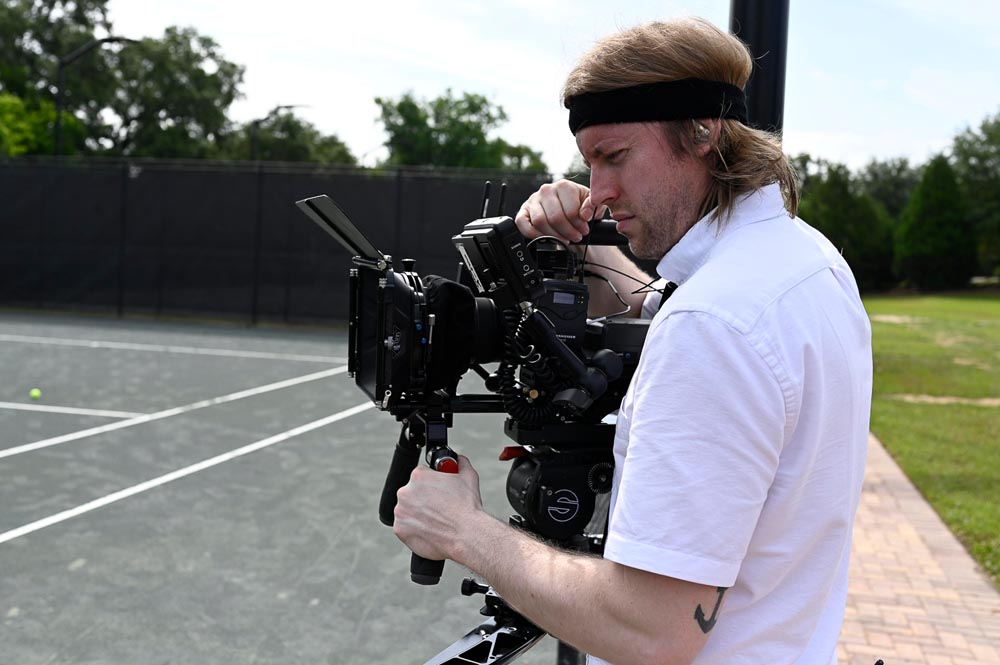Hello internet! It’s time again for #TravelTuesday with Dave here at ScottKelby.com and so here I am, Dave Williams, with some photographic wisdom for you, free of charge!
This past week I’ve been all over Nevada, Utah and Arizona, and I’ve explored a few slot canyons. I had such a great time in Antelope Canyon a couple of years ago that I decided to go exploring and find some more slot canyons further off the beaten path. There’s an art to shooting in slot canyons, and I want to tell you what I’ve learned about shooting them so you can have a head-start if you get to explore any yourself. Let’s do it!
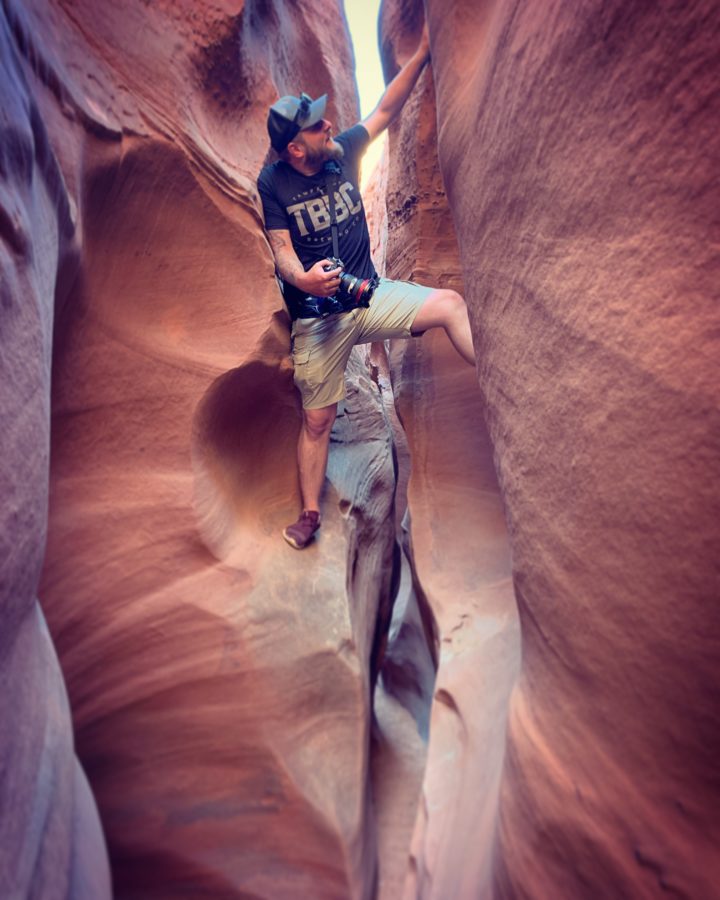
First up, if you’re in a sandy slot canyon with deep orange walls, just like Antelope Canyon, you can give the colour some serious punch by setting your white balance to ‘Cloudy.’ What this does is enhance the oranges and bring out the purple tones. The colour you get in some of the slot canyons is incredible and this little tweak will really help to bring them out.
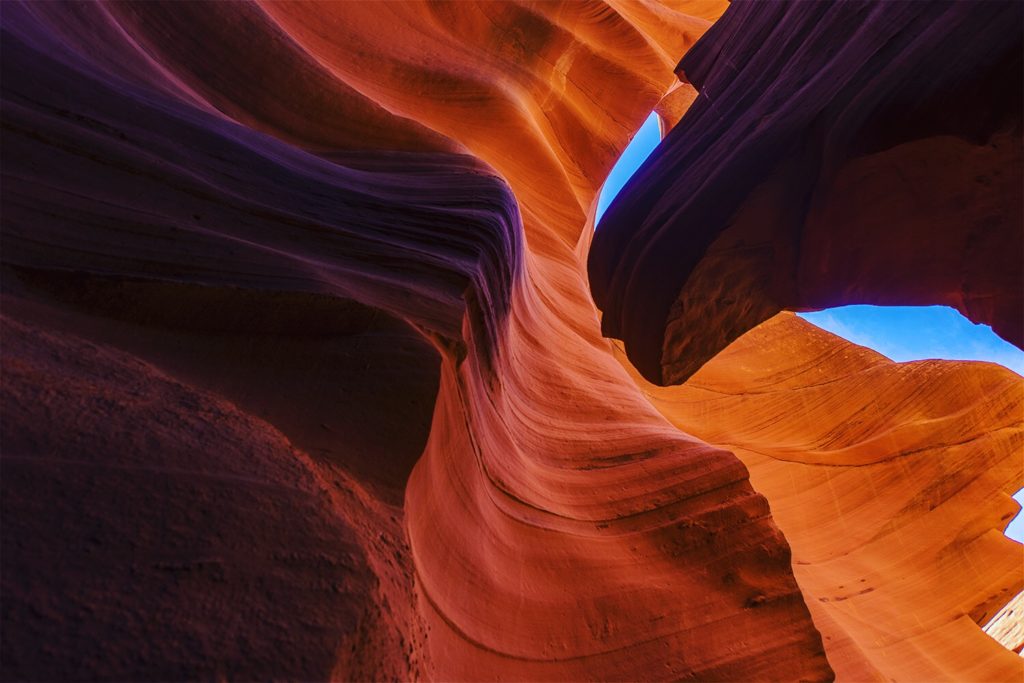
Next up, shoot bracketed. What this means is shooting several exposures at different levels (either with different shutter speeds or different apertures depending on your camera or preference) because there can be some serious contrast on the slot canyons. They tend to occur in places where the sun shines nice and bright, and their high walls trap the shadows. If we shoot bracketed exposures we can merge a HDR shot in post to give the entire range. Don’t forget, your eye can see 13 stops of light at one time whereas your camera only sees one. Shooting bracketed is done by turning on bracketing or auto-exposure bracketing in your camera – check the manual to see how to do this. In post, using either Lightroom or Camera Raw, select the series of exposures (all you really need according to Adobe is two) and right click, then choose ‘Merge To HDR.’
And then, because we want to align our bracketed exposures as best as we can and allow for longer exposures in places, we need stability. I use my Platypod to keep my camera steady, resting it on the floor or holding it firmly on the canyon walls. Taking my Platypod rather than a tripod allows me more freedom of movement in the often cramped canyons, and in fact if you take a regular tour of Antelope Canyon you aren’t allowed to take a tripod.
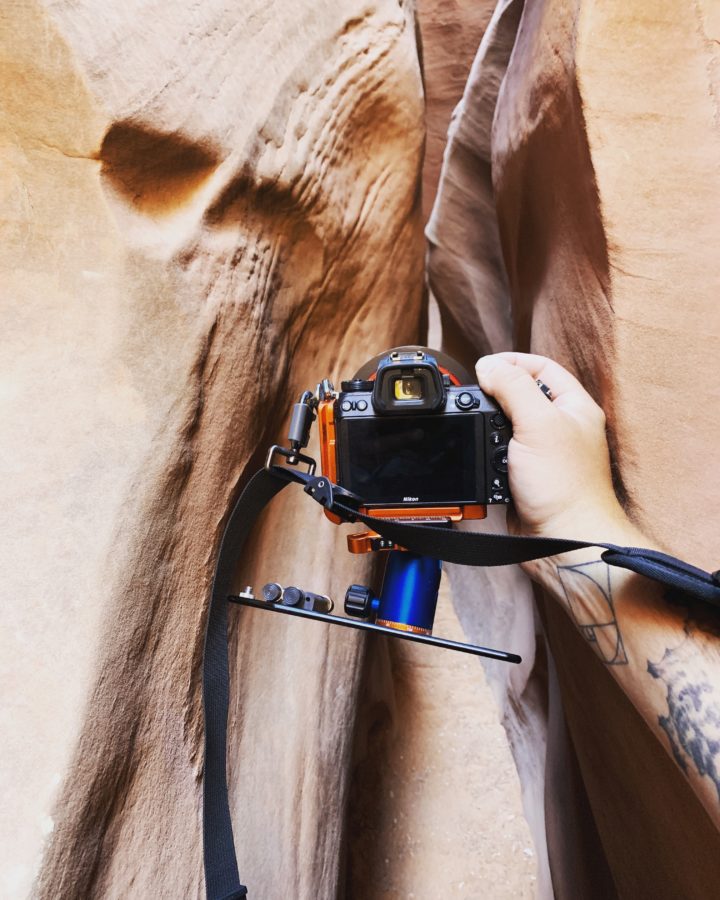
The best time to explore a slot canyon, according to many, is midday. The sun overhead offers light on the canyon walls and straight down onto the floor. Having the stability of a tripod or Platypod means that we can take advantage of the midday light, grab a handful of sand and toss it up through a beam of light, and catch a long exposure just like Peter Lik did in his famously record breaking photo, Phantom, or mine right here!
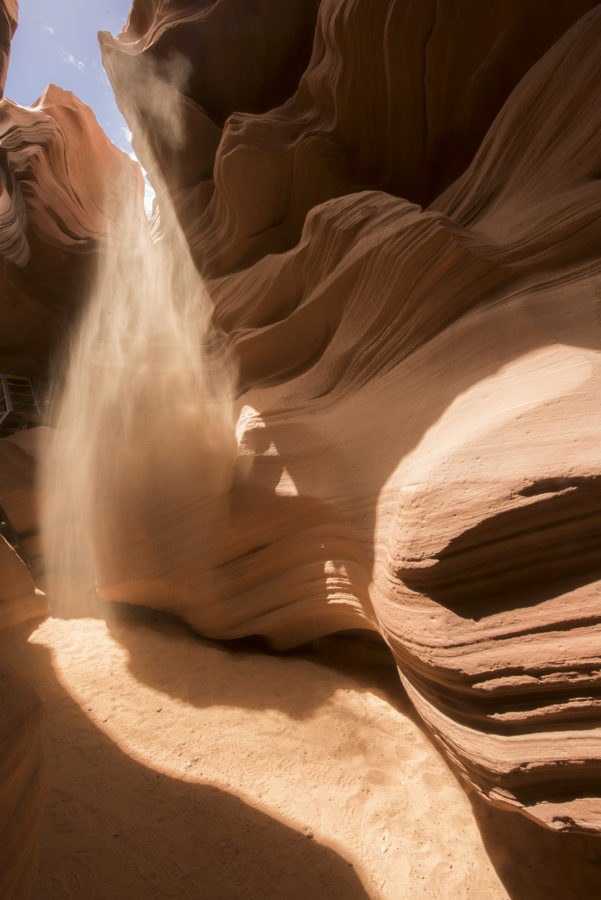
I hope that was useful, and I’ll catch you next week! For now I’m at the tail end of my USA adventure. You can check it out here.
Much love
Dave




